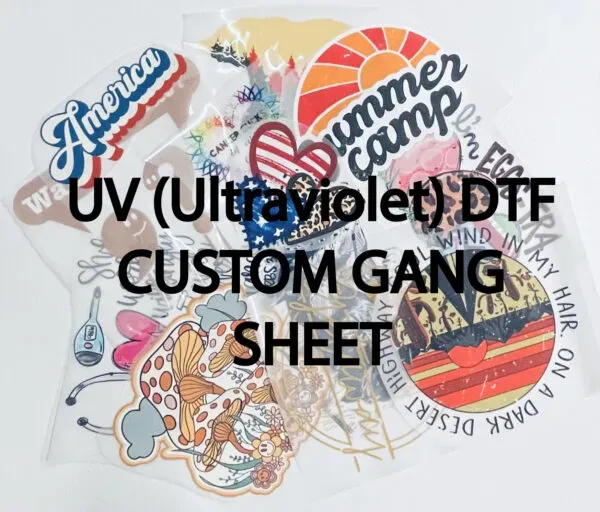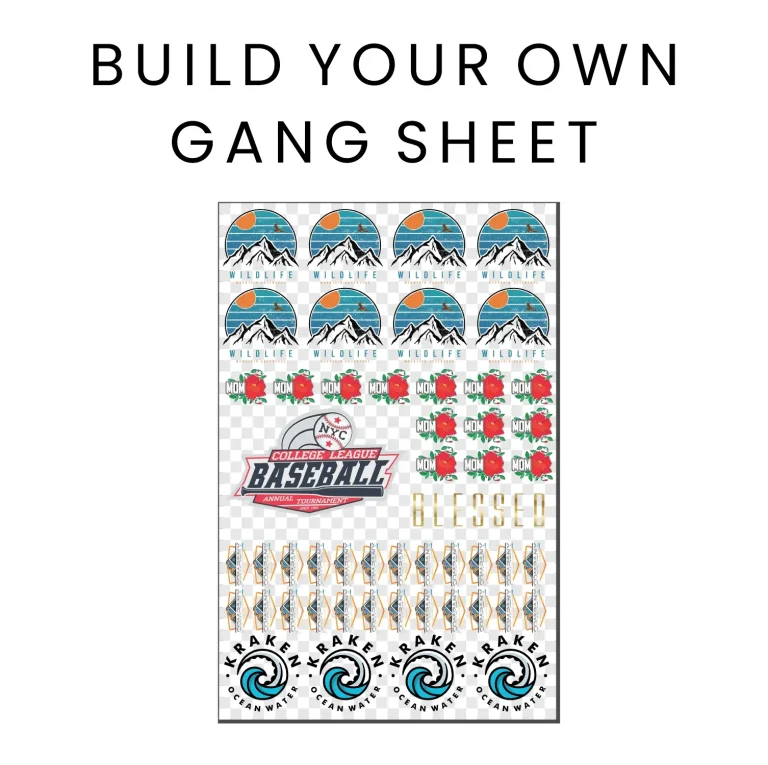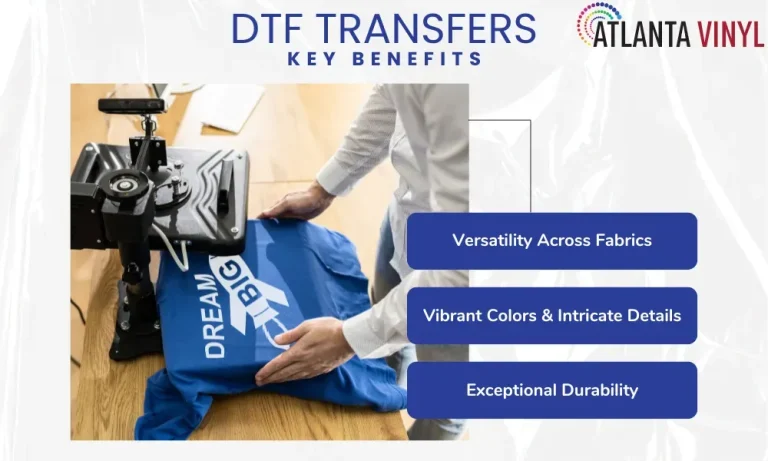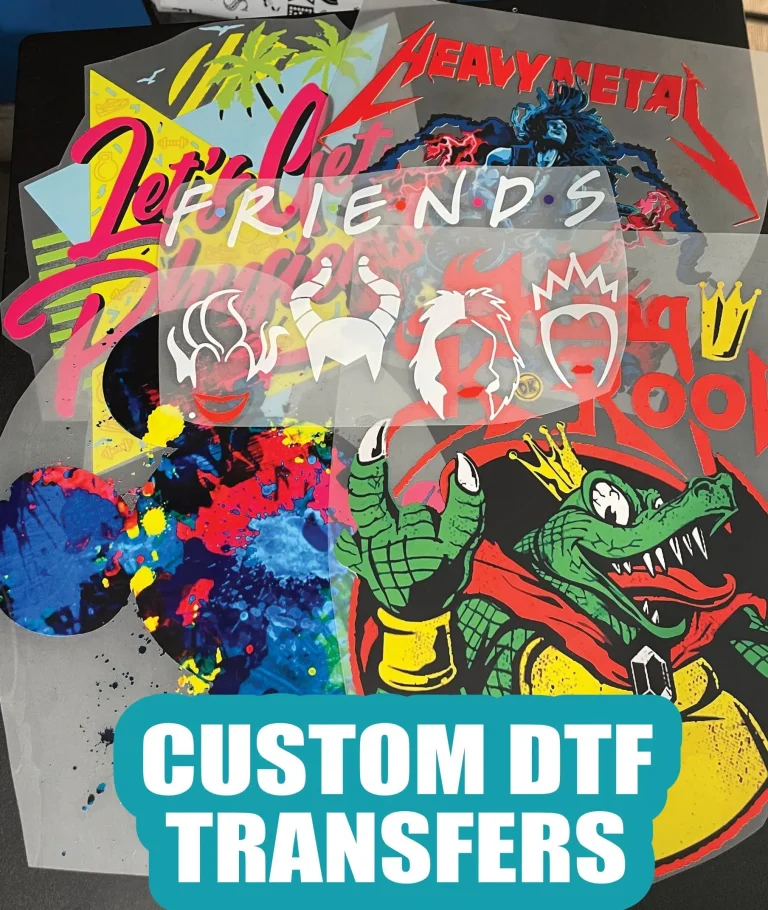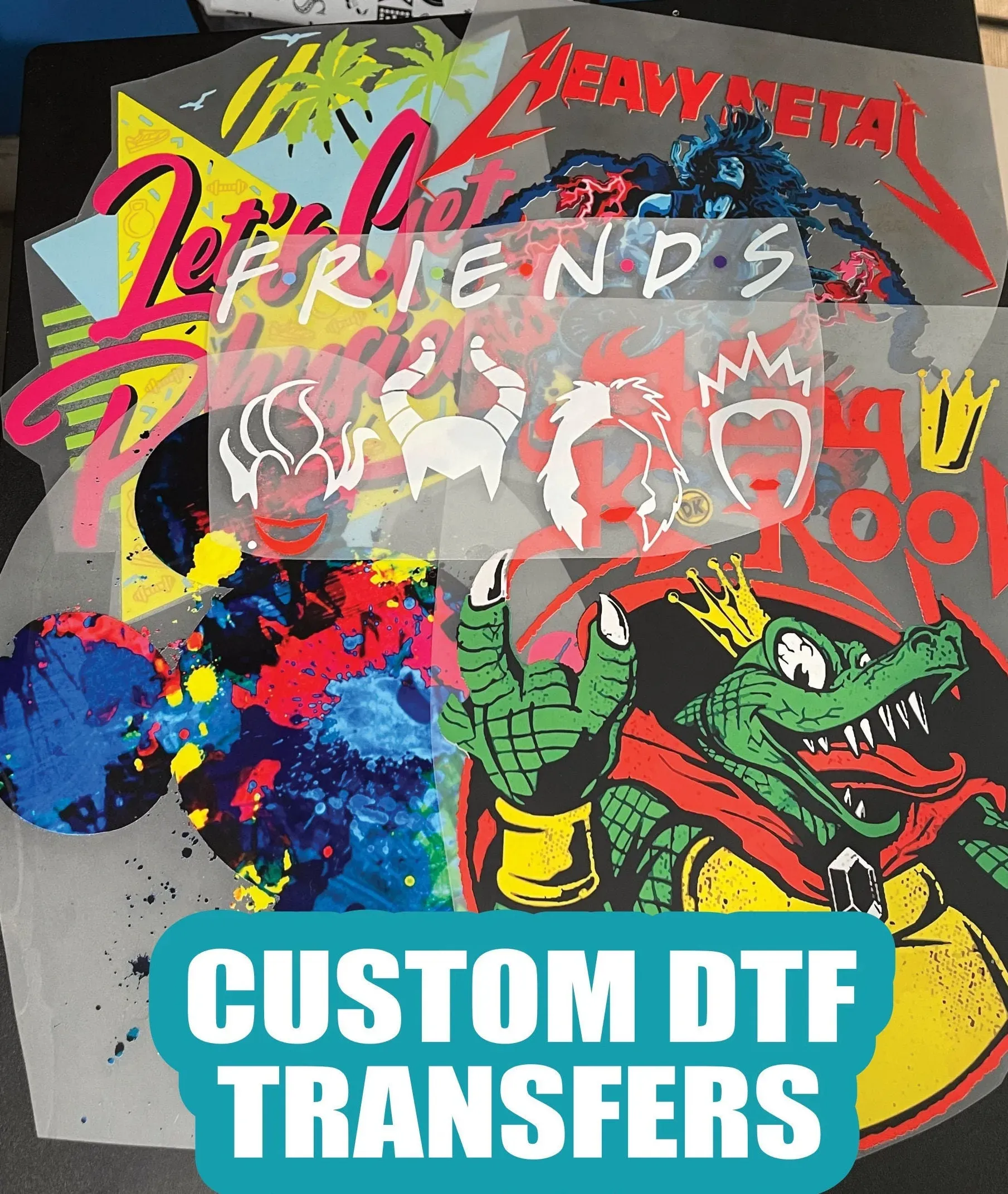
DTF Transfers, or Direct-to-Film transfers, are revolutionizing the custom apparel industry by providing unmatched quality and versatility. This innovative printing method allows designers to print intricate and vibrant designs directly onto a specialized film, which is then transferred onto various fabrics with ease. As the demand for personalization in fashion grows, DTF technology benefits businesses by enabling low-cost, small-batch runs without sacrificing quality. Moreover, this approach aligns with sustainable printing practices, making it an eco-friendly option for brands conscious of their environmental impact. Explore how DTF transfers can elevate your custom apparel offerings, whether you’re a small business or a DIY enthusiast looking to create unique fashion pieces.
In the realm of personalized clothing, Direct-to-Film printing is emerging as a popular choice among creators and brands alike. Often referred to as DTF printing, this technique is gaining popularity due to its efficiency and high-quality output, allowing creators to achieve detailed designs on a variety of fabric types. As customization becomes a key trend in fashion, the benefits of this unique technology cannot be understated. Additionally, the focus on sustainable printing makes DTF an appealing option for those looking to merge creativity with environmental awareness. Whether you’re venturing into the world of custom apparel or enhancing your existing offerings, understanding DTF technology is essential for staying ahead in the market.
Understanding the Process of DTF Transfers
DTF transfers work by first printing a design onto a special film using high-quality inks. This film is then heat-pressed onto the fabric, allowing the inks to bond effectively with the material. The process is not only efficient but also allows for intricate designs to be printed accurately, showcasing vibrant colors and fine details. This method is particularly beneficial for custom apparel, as it empowers designers to unleash their creativity without being limited by the constraints of traditional printing methods.
Moreover, DTF technology simplifies the printing process. Since the designs are initially printed on a film, businesses can produce multiple transfers at once. Thereafter, these transfers can be applied as needed, reducing setup times and waste often associated with other printing techniques. This makes DTF a preferred option for businesses that require flexibility and efficiency in their production line.
The Versatility of DTF Transfers Across Various Fabrics
One of the standout benefits of DTF transfers is their ability to work on a diverse range of fabrics. Whether it’s cotton, polyester, or blends, this printing method adapts seamlessly to different materials. This versatility opens up new avenues for custom apparel brands to experiment with various fabric types for their products, enabling them to cater to wider customer preferences. From t-shirts to jackets, DTF transfers can be utilized in diverse applications, enhancing brand offerings.
Furthermore, the adaptability of DTF technology means that businesses can invest in fewer printing machines while still expanding their product range. This capability is especially significant for small businesses and startups that are looking to make their mark in the crowded custom apparel market. By providing high-quality prints across different fabric types, DTF technology allows these businesses to bring unique, custom-designed apparel to their customers.
Cost-Effective Solutions for Small Batch Printing
DTF transfers offer a cost-efficient solution, particularly for small batch runs. Unlike traditional screen printing, which typically requires large minimum orders to be economical, DTF technology enables businesses to print as little as one item at a time without incurring significant costs. This flexibility allows entrepreneurs and small brands to test new designs without the financial risks associated with larger print runs.
This economic advantage is a game-changer for independent creators and businesses that thrive on unique, limited-edition custom apparel. As they operate on tighter budgets, the ability to produce small quantities on demand without excessive overheads maximizes their potential for profitability. DTF transfers make it possible for every idea to materialize into a tangible product, nurturing creativity and individual expression in the custom apparel market.
Faster Turnaround Times with DTF Technology
Another notable benefit of DTF transfers is the accelerated turnaround time they offer. The streamlined process of printing and heat pressing allows businesses to quickly transform designs into finished products. This quick production pace is essential for brands aiming to meet the ever-increasing consumer demand for customization and fast fashion, especially during peak seasons or promotional events.
With faster turnaround times, businesses can manage their inventory better and respond swiftly to trends. This agility not only improves customer satisfaction but also enhances marketing strategies, allowing brands to stay relevant in an ever-changing marketplace. In a world where quick delivery and unique products can determine the success of a business, DTF transfers are proving to be an invaluable asset.
Sustainable Practices in DTF Printing
As the demand for eco-friendly practices continues to rise, DTF technology emerges as a sustainable choice for custom apparel printing. Many inks used in DTF transfers are water-based and contain fewer harmful chemicals compared to traditional printing methods. This environmentally conscious approach positions DTF as a green alternative that appeals to consumers seeking eco-friendly products.
Brands that adopt DTF printing can market themselves as sustainable and socially responsible, tapping into a demographic increasingly aware of their purchasing choices. Utilizing DTF technology not only helps reduce waste generated in the printing process but also aligns with the active movements towards sustainability in the fashion industry. This focus on eco-friendliness can drive brand loyalty and attract consumers committed to supporting businesses that prioritize environmental stewardship.
The DIY Trend and DTF Printing
The rise of DIY culture has significantly contributed to the popularity of DTF printing among consumers looking to craft their custom apparel at home. With DTF printing kits readily available and easy-to-follow tutorials online, enthusiasts can create unique designs without needing extensive technical expertise. This accessibility enables a broader audience to engage in custom apparel creation, fostering a community of creators.
Furthermore, the DIY aspect of DTF transfers enhances the enjoyment of personal expression through fashion. As people take pride in creating their apparel, DTF technology becomes a tool for individualism and creativity. This rising trend resonates particularly well with younger consumers who value personalization and enjoy showcasing their lifestyles and tastes through unique clothing items.
Frequently Asked Questions
What are DTF transfers and how do they work in custom apparel?
DTF transfers, or Direct-to-Film transfers, are an innovative printing technique where designs are printed on a special film and then heat-transferred onto fabric. This method allows for vibrant colors and intricate details, making it ideal for custom apparel.
What are the key benefits of using DTF technology for custom apparel?
The key benefits of DTF technology for custom apparel include high-quality prints, versatility across various fabric types, cost-effectiveness for small runs, quick turnaround times, and eco-friendly options that align with sustainable printing practices.
How does DTF printing compare to traditional screen printing for small businesses?
DTF printing is more cost-effective for small businesses because it allows for single-item production, unlike screen printing which often requires large minimum orders. This flexibility helps startups manage inventory and meet customer demand without high upfront costs.
Can DTF transfers be used on all types of fabrics?
Yes, DTF transfers are versatile and can be applied to a wide range of fabrics including cotton, polyester, and blends, making them suitable for various garments like hoodies, t-shirts, and bags, perfect for custom apparel businesses.
Is DTF printing a sustainable option for apparel production?
Yes, DTF printing is considered a sustainable option as many inks used are water-based and free from harmful solvents, reducing environmental impact while catering to eco-conscious consumers looking for sustainable printing solutions.
How has the rise of DIY culture affected the popularity of DTF transfers?
The rise of DIY culture has increased the popularity of DTF transfers, as enthusiasts seek user-friendly printing kits and resources to create personalized apparel at home, thus making DTF technology a staple in the custom apparel market.
| Key Point | Details |
|---|---|
| Definition of DTF Transfers | A process where designs are printed onto a special film and transferred to fabric using heat and pressure. |
| High-Quality Prints | Delivers vibrant colors and fine details, making designs visually appealing and professional. |
| Fabric Versatility | Works on various materials including cotton, polyester, and blends, enabling diverse product offerings. |
| Cost-Effectiveness for Small Runs | Allows production of small batches without high costs, ideal for startups and independent creators. |
| Quick Turnaround Times | Streamlined process allows fast production, meeting customer demands swiftly. |
| Eco-Friendly Considerations | Utilizes water-based inks, making it a greener option compared to traditional printing methods. |
| Market Growth and Demand | Increased demand for personalized items boosts the adoption of DTF technology in the custom apparel industry. |
| Technological Advancements | Emergence of new machines and materials enhances efficiency and quality in DTF printing. |
| Rise of DIY Culture | Popularity of custom apparel creation at home increases demand for DTF kits and tutorials. |
| Sustainability Focus | DTF transfers minimize waste and attract environmentally conscious consumers. |
Summary
DTF Transfers are revolutionizing the custom apparel industry by providing high-quality, versatile, and cost-effective solutions for personalization. As businesses and consumers alike seek unique and eco-friendly clothing options, DTF technology stands out by producing vibrant designs on a range of fabrics, all while minimizing production costs and turnaround times. The growing DIY trend further amplifies the appeal of DTF transfers, making them an essential innovation in the realm of custom apparel.

